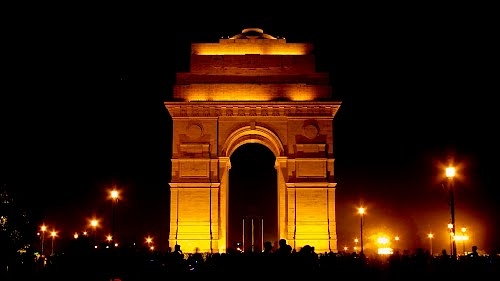
Nothing Wrong in Thinking Big
We cannot constrain the dreams of 500 million Indians by “small” thinking any more.
China, the second largest economy in the world at a little over $9 trillion, realised long ago that infrastructure is the key to building a modern economy. It has therefore consistently invested in developing its roads, railways, telecommunications, power, water, ports, airports and the like. Spending, on a weighted average basis, 8.5% of its GDP (between 1992-2011) on infrastructure, it is clearly the world’s leader in infrastructure development spending, overtaking the US and the EU.
From the late 1990s to 2005, over 100 million Chinese benefited from power and telecom upgrades. And from 2001 to 2004, investment in roads grew by a massive 51%. Annually!
Its 2020 plans call for having 139,000km of expressways, 240+ airports and 237 million TEU container terminal capacity at its ports. It plans on aggressively connecting existing and new emerging economic clusters within its boundaries. Not satisfied with this, China is investing $1.1 trillion in accelerating 300 infrastructure projects to shore up growth above 7%.
A recent report announced the approval of a $242 billion (yes, you read that right!) high speed 4,350 mile railway link between Beijing and Moscow. This would cut the travel time from the current 6 days to about 30 hours.
4 of the top 5 banks in the world, measured by assets, are Chinese. Three of the top 5 IPOs of all time are Chinese with Alibaba’s (NYSE:BABA) September 18th, 2014 $25billion IPO leading the pack. The three Gorges Dam hydroelectricity project is the world’s largest with an installed capacity of 22.500MW.
China pulled 680 million people out of misery while reducing its extreme-poverty rate from 84% to 10% now. Its per-capital GDP is around $8000, about 2.5x of India’s.
These numbers naturally, like all numbers, hide the losses, the environmental and human costs and other negative consequences. This article isn’t about those. It is about calling out the lessons from China loudly, clearly and unequivocally: the incredible ability of the Chinese to think BIG!
Without setting BIG audacious goals, it is impossible to deal with the incredible size of the challenges we face. Dreams cannot and should not be constrained. Especially for our economy and its enablers like infrastructure.
I remember reading an Akbar and Birbal tale many years ago. In this story, Akbar and Birbal wager on something. Akbar tells Birbal that if he (i.e. Akbar) loses, he could give Birbal as much gold as he wanted since he was the emperor, but what would Birbal give Akbar if he lost? Birbal said that if he lost, the first person who comes to the royal durbar the day after the loss would be asked to name the highest number he could think of. And Birbal would give Akbar as many gold coins as the number mentioned.
Sure enough, Akbar wins and asks Birbal to prepare himself for the following day when he’d have to pay Akbar a huge sum in gold. The next morning, a beggar is the first person to come to the royal durbar and upon being asked to name a big number, says “100”. Birbal with a knowing smile promptly hands over a bag of 100 gold coins to Akbar. He later mentions to Akbar that for someone like a beggar who has to struggle for survival, the sum of 100 gold coins was an unimaginable amount and was the highest number he could think of. Knowing that the beggar was always the first person everyday in the royal durbar, Birbal was confident of his ability to pay.
We’ve encouraged people through the years to think and behave small like the beggar in the story by making them operate with largely self-imposed resource constraints. We have forced our people to dream very small dreams, sometimes not even have any dreams, goals and ambitions. The “think small” mantra appears to be pervasive in our policy making. And the resultant outcome is that we do things “small”. A look at our industrial policy over the years, especially the reserved list for the small scale sector, is enough to illustrate the point.
We are paralyzed with inaction and self-doubt when there are resources to be deployed. We employ constraints based reasoning, i.e. we impose constraints before we decide the goals and our ambitions. We also assume that the constraints are somehow unchangeable and try and fit our ambitions and desires within them. We don’t think of possibilities – what would it be if we had world class infrastructure? And then figure out the ways and means to make it happen. We have to realise that the scarcity lies in our imagination and willpower. (The only area, where in recent times, we’ve demonstrated BIG thinking has been in corruption)
The good news is that the young, restless, aspirational, confident new India has dreams on a global scale. The question, how will our law, policy makers and our bureaucrats react? We cannot, anymore, constrain the dreams of 500 million Indians by “small” thinking.
What do you think?